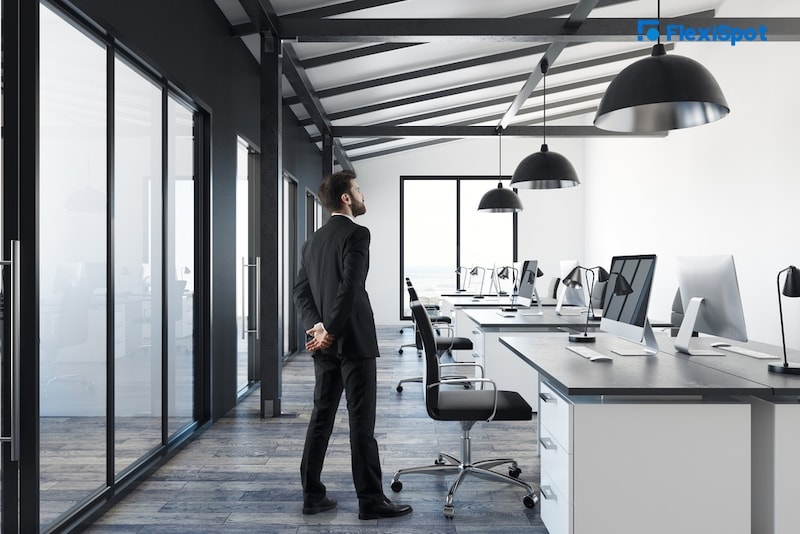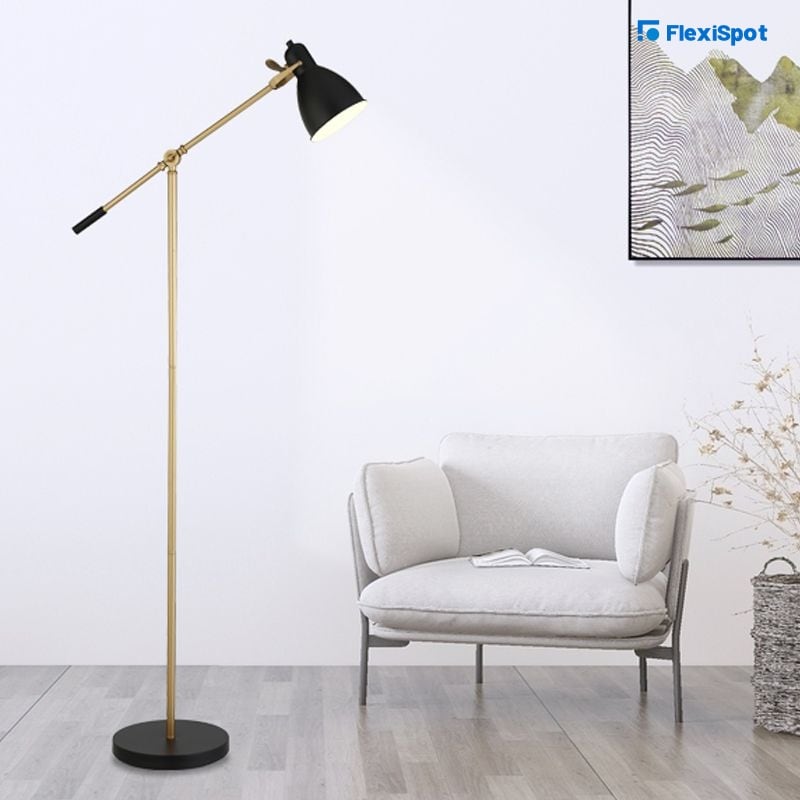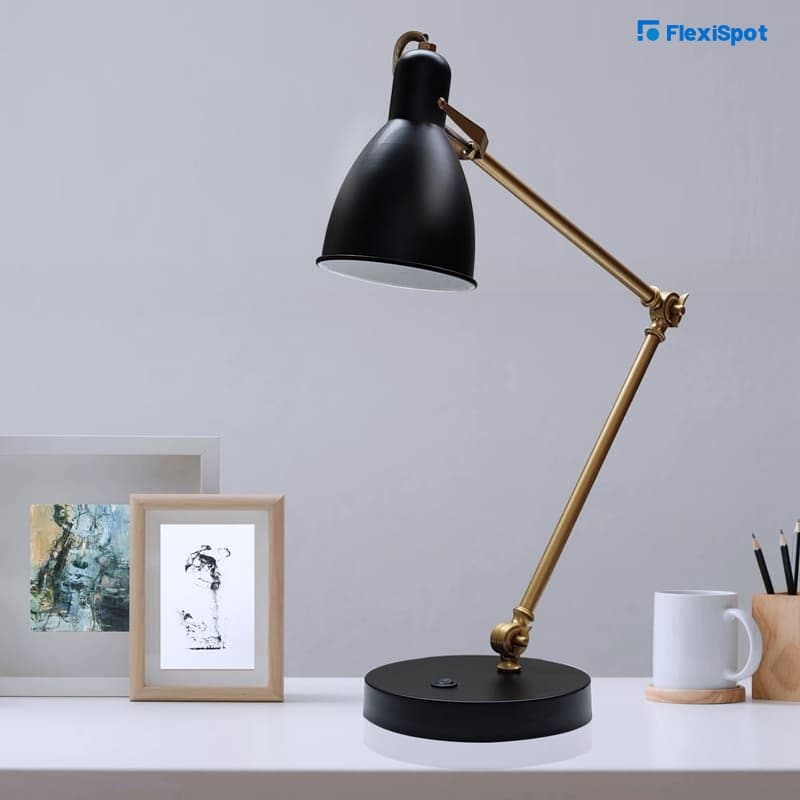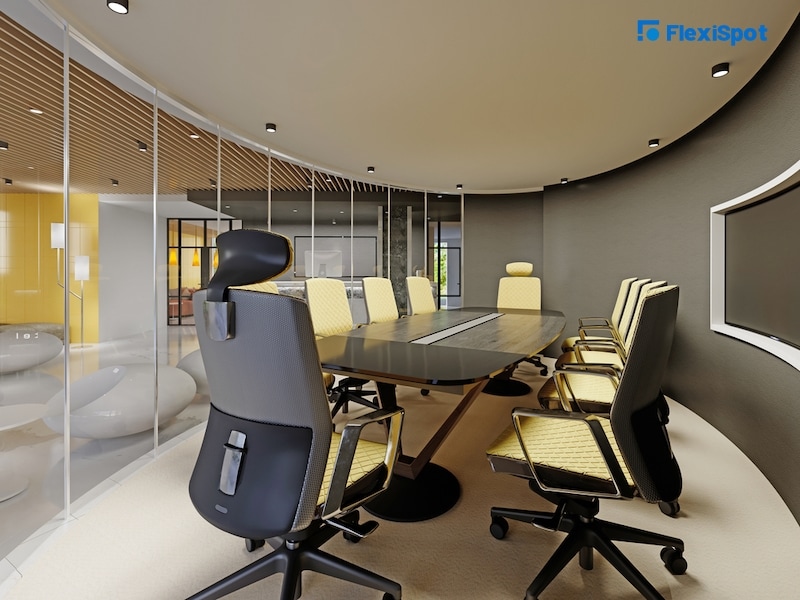Ergonomics is critical in today's workplace. While most businesses and employees are now more aware of workplace health and safety, lighting is a critical component of an ergonomic workplace that is frequently overlooked.
It's easy to disregard the importance of proper lighting in the workplace, yet it directly impacts employee productivity. In addition to lowering certain health risks, proper lighting also boosts efficiency and security at work, among other benefits. Read on to understand the importance of adequate lighting in any workspace and what you can do to ensure good lighting ergonomics.
Importance of Adequate Office Lighting
Sufficient illumination in the workplace is essential for optimal ergonomics. Here are some reasons why adequate lighting is important.
Employee Health & Wellbeing
Workers' eyesight, energy levels, and well-being are improved by lighting that may be tailored to individual needs. In most cases, buying a few ergonomic light sources or rearranging your office layout and furniture to ensure maximum light ergonomics can have a significant impact on your health without the need for a major change in your office infrastructure.
Exposure to the right amount of natural light can benefit your health and well-being both inside and outside the workplace. A Cornell University study published in 2018 found that introducing controlled daylight into a workspace reduced common office-related ailments like eye strain, headaches, and blurred vision by 84%.
Productivity & Performance
It's possible to harness and distribute this crucial resource throughout your area efficiently with careful consideration of visibility channels and the use of curtains, awnings, and transparent or tinted glazing.
Regardless of the sector you might be working in, adequate lighting will help your employees focus and feel better, with studies showing that workers' productivity increases directly due to proximity to windows and that natural light in the workplace can even improve employees' sleep.
Cost-Effectiveness
In addition to ensuring the health and well-being of your employees, ergonomic office lighting can save you money and reduce your carbon footprint. Electricity accounts for roughly 60% of the total cost of workplace lighting. As a result, upgrading your lighting and technology isn't an unnecessary extravagance. It is now possible to apply various energy-saving solutions at work, such as LED lights.
Thanks to sensor technology and a new light management system, lighting systems are also becoming more advanced. Sensors detect the presence or absence of a person, causing the lights to automatically turn off when the workplace is empty.
This is a cost-effective approach to provide your workers with the ideal illumination level. It's a tried-and-true method for illuminating less-frequented corridors and aisles. Lamps with daylight sensing turn off automatically when enough daylight is detected.
Easy Tips for Ergonomic Office Lighting
Good and adjustable office lighting is essential for modern working spaces because it allows for the appropriate degree of adaptability. Ergonomic office lighting combines standalone office lighting and adjustable office lighting.
You may ensure that you get the most out of the natural light in your office by placing desks around the perimeter of a room. When natural lighting is not possible, FlexiSpot lighting solutions can be employed to create ergonomic office lighting. Here are some ideas to improve lighting ergonomics at your office.
Install LEDs to Saves Money & Improves Light Quality
Fluorescent tubes have long been the preferred light source for offices due to their low purchase and installation costs, suitability for installation in suspended ceilings, and ability to illuminate huge areas. However, common difficulties with fluorescent tubes include flickering and dimming with age, resulting in variable light quality. This, combined with issues such as buzzing, makes them an unsuitable option for offices.
The LED light is a popular alternative to fluorescent tubes and one that we frequently request in our designs. While LEDs are frequently viewed as a pricey alternative for offices, they are more cost-effective in the long run than fluorescent lighting as LEDs last significantly longer and need significantly less power to function.
Another environmental benefit of LED tubes is that they do not contain mercury or other hazardous substances found in fluorescents. LED panels can be installed in suspended ceilings in place of traditional light fittings for a more modern appearance. They also help decrease glare, which improves office comfort and productivity.
Choose Task-Appropriate Lighting
Each area of a modern business requires a unique sort of lighting to accommodate the needs of the employees. Lighting is critical when designing a new office to ensure that staff can work comfortably and successfully. Open-plan workplaces can easily become over-lit with artificial light.
This can result in glare from overhead fluorescent bulbs and excessive lighting, which can negatively affect people's health and result in unnecessary energy consumption. To avoid over-illumination, lighting should be layered. Instead of all light coming from the ceiling, ambient and task lighting should be added to give a person a better choice over how their workspace is lighted.
For instance, an adjustable desk lamp provides additional illumination while performing specific duties, while an adjustable floor lamp enables individuals to customize their lighting. FlexiSpot brings you multiple lighting solutions. For example, you can choose the FlexiSpot Metal table lamp to focus light on certain areas. The modern floor lamp is another great option to create ergonomic lighting in the workplace.
Make the Most of Natural Light
Natural light is one of the most valuable commodities in office design since it instantly brightens and makes an office feel more welcome. Natural light should take precedence over artificial lighting, with the purpose of connecting individuals to the outside world while still allowing them to work comfortably.
Employees exposed to more natural light sleep longer, exercise more and enjoy a higher quality of life than employees exposed to less light. Natural lighting in a workplace can also help reduce energy costs, as more natural light means less artificial light is necessary; this is another financial benefit of optimizing natural light levels in an office.
Many companies opt for daylight integrated lighting control systems that adjust the amount of artificial light in an area in reaction to the amount of natural light. This means that the artificial light will fade automatically in response to the amount of available natural light.
Use Lights to Denote Different Office Zones
Lighting may support your brand values and work in concert with your office design to produce an unforgettable first impression. Lighting can assist in delineating distinct zones within an open-plan office, hence maximizing available space. The following are some ways in which lighting might assist in the establishment of dedicated workspaces in an office:
Opt for spotlights to illuminate hallways and guide people to various regions of the business or building.
Choose low illumination options in booths or little nooks to assist in conveying a sense of privacy.
Use accent lighting to draw attention to shelves or plants and choose bulbs and lampshades of varying sizes and shapes to add a bit of color to your office décor.
Large pendant lights suspended above a large table can be used to help designate rooms as a meeting and gathering space.
Experiment with more unconventional lighting design elements, such as different colors in breakout spaces and lounges.
In all sections, adaptable features such as dimmer switches, standing lamps, and tabletop lamps can be added to provide individuals control over the lighting and atmosphere of the space, regardless of whether they wish to work, eat, meet, or relax there.
Consider Lighting Temperature & Lighting Control Possibilities
If you are revamping your office, it's critical to consider the lighting's color temperature keeping in mind how different spaces will be used. While softer, yellower light with a lower color temperature is better for reception areas, meeting rooms, and breakout areas, whiter light promotes concentration and is best used to illuminate task-based areas.
Many companies use occupancy sensors and human-centric artificial lighting to keep tabs on how much space is being used and provide lighting accordingly. Improved productivity and operational flexibility can be achieved by adapting to the working patterns and preferences of employees. Plus, human-centered lighting systems utilize up to 90% less energy than typical lighting systems.
It would be best if you also considered individual lighting control possibilities. This may seem unusual at first, given that most offices have non-adjustable general lighting. However, people's needs vary depending on their age and the type of work they do.
An average 60-year-old requires more light than a 20-year-old to do things correctly. Similarly, people reading or working in a studio require more light than those working on the computer. Table lamps and floor lamps are excellent choices for a light source that can be adjusted.
Follow Best Ergonomic Lighting Practices with FlexiSpot
Are you ready to revamp your office lighting? FlexiSpot presents the best office lighting solutions for ergonomic lighting. Check out our table and floor lamps range and discover several other ergonomic office products today.





